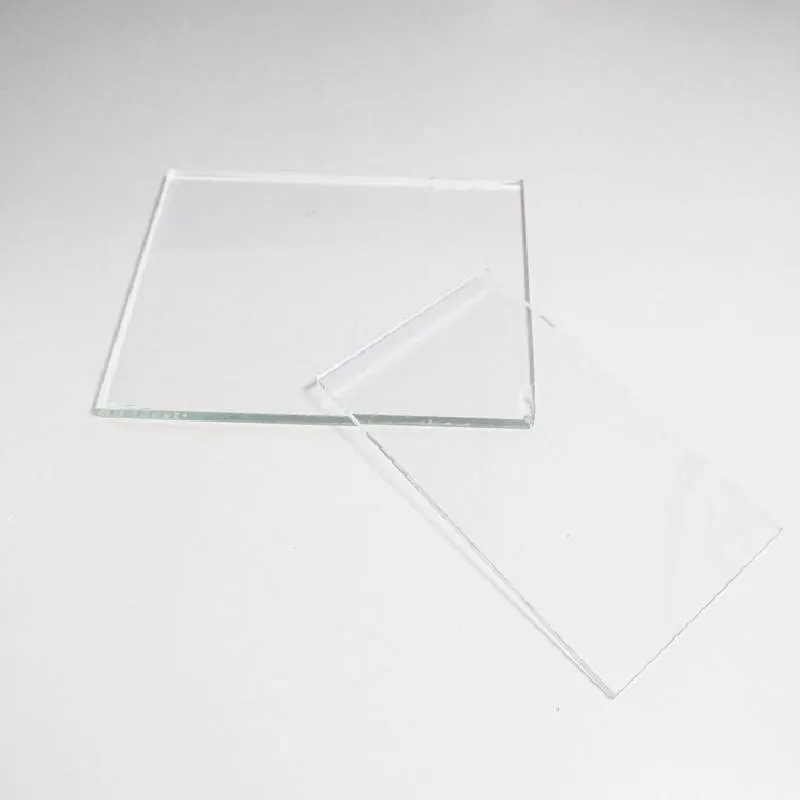The Craft of Tempered Glass Making
Tempered glass, also known as toughened glass, is a type of safety glass that has been treated to withstand greater stress and impact than regular glass. The process of making tempered glass is a fascinating blend of art and science, requiring precision, skill, and an understanding of material properties. The journey of transforming raw silica sand into robust tempered glass involves several critical steps, each of which contributes to its strength and safety characteristics.
The first stage in tempered glass production begins with the selection of high-quality raw materials, primarily silica sand, soda ash, and limestone. These materials are carefully measured and mixed to create a batch that will be melted in a furnace. The glass-making process involves heating the raw materials at extremely high temperatures—around 1,400 to 1,600 degrees Celsius, where they melt into a molten glass. This phase is crucial for ensuring the uniformity of the glass composition, which directly influences its final strength.
The Craft of Tempered Glass Making
After cooling, the glass is cut into the desired sizes and shapes, ready for the tempering process. Tempering involves heating the glass sheets again to a specific temperature, typically between 600 and 700 degrees Celsius, followed by rapid cooling. This rapid thermal cycling creates a situation where the outer surface of the glass cools and solidifies faster than the inner layers, resulting in compressive stresses on the surface and tensile stresses within the glass. These stresses make tempered glass significantly stronger than untreated glass—up to five times more resilient when subjected to impact or thermal stress.
tempered glass maker
One of the most significant benefits of tempered glass is its safety features. In the event of breakage, tempered glass shatters into small, blunt pieces rather than sharp shards, greatly reducing the risk of injury. This characteristic makes tempered glass an ideal choice for a variety of applications, including shower doors, glass doors and tables, and facades of buildings. Additionally, tempered glass is widely used in automotive and architectural applications where safety and durability are paramount.
The tempered glass market has also seen innovations in recent years. Laminated tempered glass, for instance, combines two pieces of tempered glass with a layer of polyvinylbutyral (PVB) to enhance security and sound insulation. Furthermore, advances in technology have led to the development of energy-efficient glass products that minimize heat transfer, contributing to sustainable building designs.
The tempered glass industry is not only about creating a material but also about engineering solutions that meet safety regulations and consumer demands. Glass makers continually refine their techniques and processes, ensuring that they produce high-quality tempered glass that adheres to safety standards and aesthetic requirements.
In conclusion, tempered glass making is a remarkable interplay of tradition and innovation. It combines artistry with engineering to produce a material that is not only visually appealing but also incredibly strong and safe. As the demand for tempered glass continues to grow in various industries, the craft of tempered glass making remains a critical component of modern architecture and design. Whether adorning a skyscraper or serving as a protective barrier in a home, tempered glass represents the pinnacle of glass-making technology.
 Afrikaans
Afrikaans  Albanian
Albanian  Amharic
Amharic  Arabic
Arabic  Armenian
Armenian  Azerbaijani
Azerbaijani  Basque
Basque  Belarusian
Belarusian  Bengali
Bengali  Bosnian
Bosnian  Bulgarian
Bulgarian  Catalan
Catalan  Cebuano
Cebuano  Corsican
Corsican  Croatian
Croatian  Czech
Czech  Danish
Danish  Dutch
Dutch  English
English  Esperanto
Esperanto  Estonian
Estonian  Finnish
Finnish  French
French  Frisian
Frisian  Galician
Galician  Georgian
Georgian  German
German  Greek
Greek  Gujarati
Gujarati  Haitian Creole
Haitian Creole  hausa
hausa  hawaiian
hawaiian  Hebrew
Hebrew  Hindi
Hindi  Miao
Miao  Hungarian
Hungarian  Icelandic
Icelandic  igbo
igbo  Indonesian
Indonesian  irish
irish  Italian
Italian  Japanese
Japanese  Javanese
Javanese  Kannada
Kannada  kazakh
kazakh  Khmer
Khmer  Rwandese
Rwandese  Korean
Korean  Kurdish
Kurdish  Kyrgyz
Kyrgyz  Lao
Lao  Latin
Latin  Latvian
Latvian  Lithuanian
Lithuanian  Luxembourgish
Luxembourgish  Macedonian
Macedonian  Malgashi
Malgashi  Malay
Malay  Malayalam
Malayalam  Maltese
Maltese  Maori
Maori  Marathi
Marathi  Mongolian
Mongolian  Myanmar
Myanmar  Nepali
Nepali  Norwegian
Norwegian  Norwegian
Norwegian  Occitan
Occitan  Pashto
Pashto  Persian
Persian  Polish
Polish  Portuguese
Portuguese  Punjabi
Punjabi  Romanian
Romanian  Russian
Russian  Samoan
Samoan  Scottish Gaelic
Scottish Gaelic  Serbian
Serbian  Sesotho
Sesotho  Shona
Shona  Sindhi
Sindhi  Sinhala
Sinhala  Slovak
Slovak  Slovenian
Slovenian  Somali
Somali  Spanish
Spanish  Sundanese
Sundanese  Swahili
Swahili  Swedish
Swedish  Tagalog
Tagalog  Tajik
Tajik  Tamil
Tamil  Tatar
Tatar  Telugu
Telugu  Thai
Thai  Turkish
Turkish  Turkmen
Turkmen  Ukrainian
Ukrainian  Urdu
Urdu  Uighur
Uighur  Uzbek
Uzbek  Vietnamese
Vietnamese  Welsh
Welsh  Bantu
Bantu  Yiddish
Yiddish  Yoruba
Yoruba  Zulu
Zulu 

